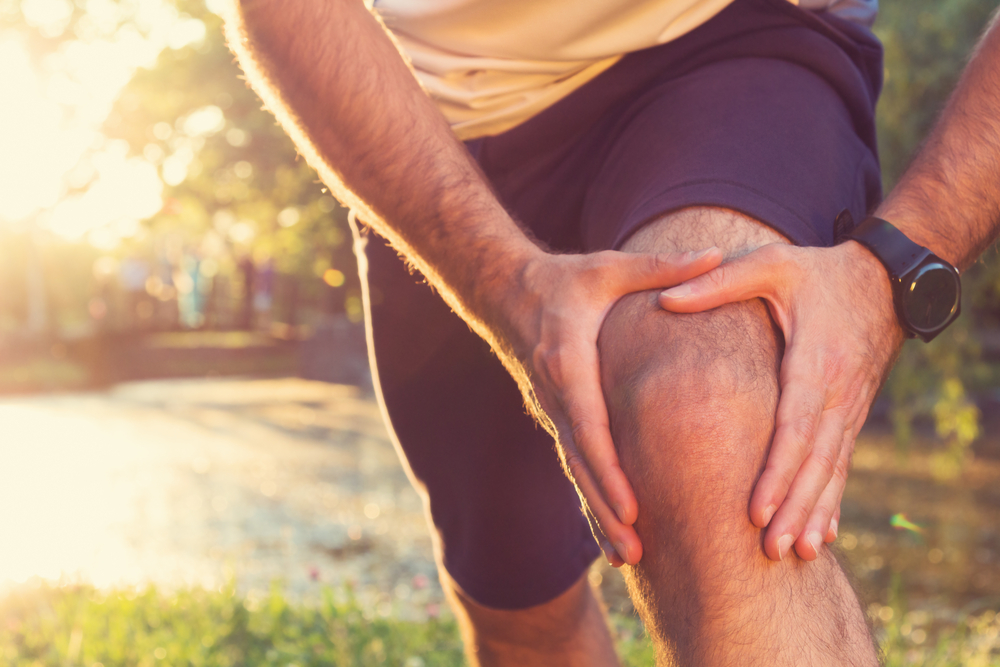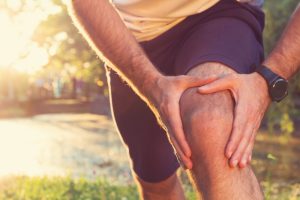
Knee Pain Treatment
Knee Pain Treatment
Knee pain is a usual symptom in people of all ages. It may begin suddenly, often after an exercise or an injury. Knee pain also may start as mild irritation, that could slowly get worse.
Everyone should have the capacity to move without pain in the knees. This is true regardless of your physical ability or age. Check with your doctor before trying any therapy, we suggest some recommendations and daily exercise that can help you maintain mobility and keep your muscles strong.
By taking the time to strengthen the surrounding muscles of the knee, you can prevent much pain that can develop over time. This will allow you to feel more flexible, enjoy the daily exercises you love without pain and walk without discomfort.

Reduce weight
The overuse of your knee can trigger knee problems that cause pain. Maintaining a healthy weight is crucial for reducing or managing the risk in the knees. We suggest these tips to manage or reduce weight, that includes:
- Serve just one serving.
- Fill up half your plate with fresh vegetables.
- Stock up your shopping cart with fresh vegetables and fruits.
- Limit your portions, you can do it using a smaller plate.
- Avoid fat, sugar, and processed foods.
- Put enough on your plate so you won’t be tempted to serve more.
Avoid osteoarthritis
Arthritis involves chronic inflammation of one or more joints in the body. Osteoarthritis is the most common type of arthritis. In people with osteoarthritis, the cartilage in one or more joints deteriorates with time.
When the cartilage degenerates, the smooth surfaces of bones in joints become pitted and rough. Cartilage is a tough, rubbery substance, usually, it protects the ends of bones and allows joints to move easily.
This condition appears when the cartilage that allows your knee to move freely becomes worn. Also if you have a history of arthritis, that could also cause knee pain.
Diagnose your knee pain
To diagnose knee pain, a doctor may use several methods such as:
- X-ray: it uses low amounts of radiation to record images of your bones and joints.
- Ultrasound: equipment used to diagnose knee pain, it uses sound waves to check inside your knee.
- Magnetic Resonance Imaging: this equipment uses magnetic energy to examine the area inside your knee.
- Physical exam: a doctor examining the knee and gently feeling it can narrow down the source of the pain.
- Arthroscopy: this is a surgical procedure, a specialist will make small incisions in the knee to insert an arthroscope.
Knee Pain Treatment
Daily exercise
If your knee pain is due to surgery, an injury, or arthritis, gentle stretching and strengthening exercises may help ease the pain while also improving your range of motion and flexibility. Having stronger muscles can reduce the impact and stress on your knee, and help your knee joint move more easily.
- Try walking: start slow if you have severe pain, try some steps around your neighborhood.
- Stand on one leg: this exercise of balance can be helpful for stabilizing the knee.
- Bicycle: run on a smooth, soft surface.
- Quadriceps: bend one knee so your foot goes up toward your glutes, put some pressure with your hand.
- Hamstring movement: lie down on a mat and bend both knees with your feet flat on the floor.
- Pull your heels: the muscles at the back of the thighs that support the knees are the hamstrings, strengthening them can relieving pain and help to stabilize the knee.
- If you have flat feet, try special shoe inserts and arch supports
Some of these movements are perfect to do in the comfort of your home, at the office, during holidays, in a park, or at your preferred location. These exercises focus on strengthening the main muscle groups that may affect the quality of movement for your knee.
Cold therapy
While you’re resting, keep your foot elevated. Wrap your knee with a compression bandage to prevent swelling, but not so tightly it cuts off circulation. Get off your feet and apply a cold compress or bag of ice to the knee. Frozen vegetables, such as peas, will also work if you have no ice handy.
But if the pain is moderate to severe, or if symptoms get worse or persist after a long period of time, you may need to seek medical attention for a full assessment. Pain due to arthritis, inflammation, or a minor injury will often be solved without medical help. Home remedies can help you manage symptoms and improve your comfort levels.







